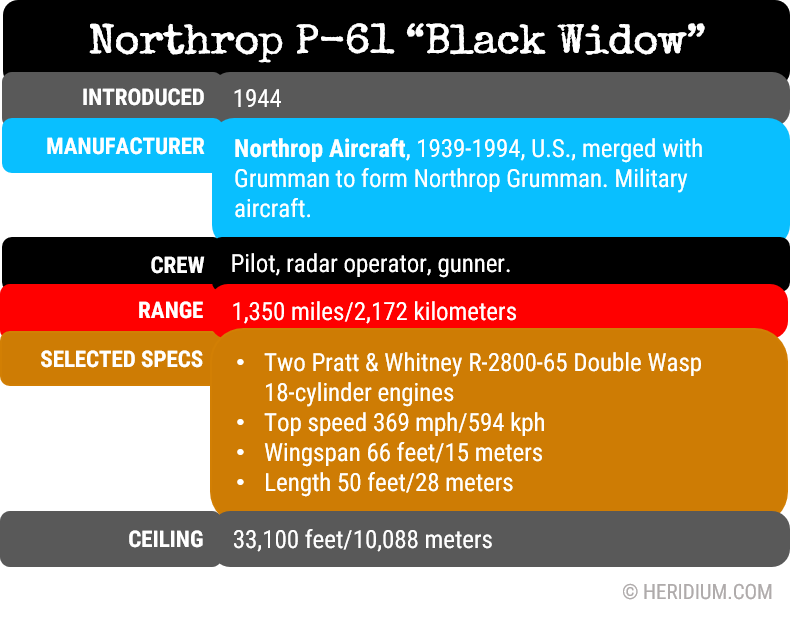Northrop P-61 Night Fighter/Bomber, "Black Widow"
Northrop’s P-61 night fighter appropriately nicknamed after another deadly nighttime hunter, the “Black Widow.”
A Fearsome Night Predator
The “Black Widow” was being developed prior to America’s entry to WW2. However, even with a laser focus on completing the night fighter, it was the last year of the war before Northrop’s P-61 entered the fray. Even so, she racked up a respectable reputation in that final year as both fighter and bomber to replace others such as the Douglas P-70. The Black Widow was the first American fighter built specifically for night operations. It could operate in completely dark conditions, and many had a black paintjob and nose art names like “Sleepy Gal,” “Moon Happy” and “Lady of the Dark,” which was also a squadron name.
The P-61 saw first action in the Pacific Theater in the hands of pilots from the 6th Night Fighter Squadron. They and the new fighter were instrumental in the island-hopping battles of Kwajalein, Eniwetok and finally Saipan, their mission goal. Japanese resistance in night raids to contest control of Siapan was intense, so pilots continued to be heavily engaged.
“It was very large for a fighter and had withering firepower.”
Black Widow 3-man crew. The new science of radar played a critical role in the ability of the P-61 to fight in complete darkness.
The P-61 had an impressive appearance and a crew of three: pilot, gunner and radar operator. It was very large for a fighter and had withering firepower. With its twin-boom design, the aircraft could fly on a single engine, even fully loaded. This was an advantage over single-engine fighters.
The radio operator was at the back of the fuselage and could look through a blade-shaped plexiglass rear window. Crews loved their P-61s, and they had many maneuvering characteristics considered excellent. Like any large aircraft, however, the Black Widow was not quite as agile as some single-engine fighters. But in firepower, general maneuverability and ability to stay in the air, it was an excellent weapon in the hands of a talented crew.
During the last year of the war, Black Widows served in the Pacific and China-Burma-India Theaters as well as the European and Mediterranean Theaters on both bombing runs and primarily as night fighters. On the evening of August 14, 1945, a Black Widow squadron won what was probably the the last Allied air victory before VJ (Victory over Japan) Day.
Versions of the P-61 served in the Air Force until 1950.
CLICK TO EXPAND IMAGES










